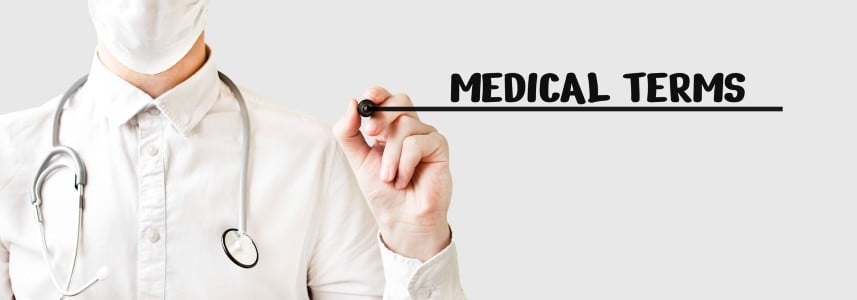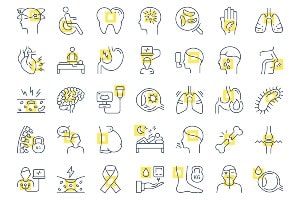About Arrhythmia (Irregular Heartbeat)

Learn about the disease, illness and/or condition Arrhythmia (Irregular Heartbeat) including: symptoms, causes, treatments, contraindications and conditions at ClusterMed.info.
Arrhythmia (Irregular Heartbeat)

| Arrhythmia (Irregular Heartbeat) |
|---|
Arrhythmia (Irregular Heartbeat) InformationIntroduction to ArrhythmiaAn irregular heartbeat is an arrhythmia (also called dysrhythmia). Heart rates can also be irregular. A normal heart rate is 50 to 100 beats per minute. Arrhythmias and abnormal heart rates don't necessarily occur together. Arrhythmias can occur with a normal heart rate, or with heart rates that are slow (called bradyarrhythmias -- less than 50 beats per minute). Arrhythmias can also occur with rapid heart rates (called tachyarrhythmias -- faster than 100 beats per minute). In the United States, more than 850,000 people are hospitalized for an arrhythmia each year. How are arrhythmias diagnosed?Tests used to diagnose an arrhythmia or determine its cause include:
How are arrhythmias treated?Treatment depends on the type and seriousness of your arrhythmia. Some people with arrhythmias require no treatment. For others, treatments can include medication, making lifestyle changes, and undergoing surgical procedures. Lifestyle Changes Can Help Arrhythmias?
What are the symptoms of arrhythmias?An arrhythmia can be silent and not cause any symptoms. A doctor can detect an irregular heartbeat during a physical exam by taking your pulse or through an electrocardiogram (ECG). When symptoms of an arrhythmia occur, they may include:
What are the types of arrhythmias?The types of arrhythmias include:
What causes an arrhythmia?Arrhythmias may be caused by many different factors, including:
What Drugs Are Used to Treat Arrhythmias?A variety of drugs are available to treat arrhythmias. These include:
What is a pacemaker?A pacemaker is a device that sends small electrical impulses to the heart muscle to maintain a suitable heart rate. Pacemakers primarily prevent the heart from beating too slowly. The pacemaker has a pulse generator (which houses the battery and a tiny computer) and leads (wires) that send impulses from the pulse generator to the heart muscle. Newer pacemakers have many sophisticated features that are designed to help manage arrhythmias and optimize heart rate-related function as much as possible. What is an implantable cardioverter-defibrillator (ICD)?An ICD is a sophisticated device used primarily to treat ventricular tachycardia and ventricular fibrillation, two life-threatening heart rhythms. The ICD constantly monitors the heart rhythm. When it detects a very fast, abnormal heart rhythm, it delivers energy to the heart muscle to cause the heart to beat in a normal rhythm again. There are several ways the ICD can be used to restore normal heart rhythm. They include:
What Is Catheter Ablation?During an ablation, high-frequency electrical energy is delivered through a catheter to a small area of tissue inside the heart that causes the abnormal heart rhythm. This energy "disconnects" the pathway of the abnormal rhythm. Ablation is used to treat most PSVTs, atrial flutter, atrial fibrillation, and some atrial and ventricular tachycardias. Ablation may be combined with other procedures to achieve optimal treatment. What Is Electrical Cardioversion?If drugs are not able to control a persistent irregular heart rhythm (such as atrial fibrillation), cardioversion may be required. After administration of a short-acting anesthesia, an electrical shock is delivered to your chest wall that synchronizes the heart and allows the normal rhythm to restart. What Is Heart Surgery?Heart surgery may be needed to correct heart disease that may be causing the arrhythmia. The Maze procedure is a type of surgery used to correct atrial fibrillation. During this procedure, a series (or "maze") of incisions are made in the right and left atria to confine the electrical impulses to defined pathways. Some people may require a pacemaker after this procedure. WebMD Medical Reference |
More Diseases
A | B | C | D | E | F | G | H | I | J | K | L | M | N | O | P | Q | R | S | T | U | V | W | X | Y | Z
Diseases & Illnesses Definitions Of The Day
- Eating, Emotional (Emotional Eating) ‐ Emotional eating facts, How do health care providers diagnose emotional eating? …
- OTC Drugs for Constipation (Laxatives For Constipation) ‐ Are laxatives safe to take during pregnancy or while breastfeeding? …
- Hyopgonadism, Primary (Low Testosterone (Low T)) ‐ How do you know if you have low testosterone (Low-T)?, Should I take testosterone? …
- Poisoning, Ciguatera (Ciguatera Poisoning) ‐ What are the symptoms of ciguatera poisoning?, What is ciguatera poisoning? …
- Head and Neck Cancer ‐ Head and neck cancer facts*, How are head and neck cancers diagnosed? …
- XXY Males (Klinefelter Syndrome) ‐ Klinefelter syndrome facts*, Language development, Physical development …
- Devic's Syndrome ‐ How is neuromyelitis optica diagnosed?, Neuromyelitis optica facts* …
- Myocarditis ‐ How is myocarditis diagnosed?, What are symptoms of myocarditis? …
- Cancer of the Testis (Testicular Cancer) ‐ After testicular cancer has been diagnosed, tests are done to find out if cancer cells have spread within the testicles or to other parts of the body. …
- Chronic Rhinitis ‐ Chronic rhinitis and post-nasal drip definition and facts, Does salt water or nasal irrigation have any role in the treatment of rhinitis and post-nasal drip? …